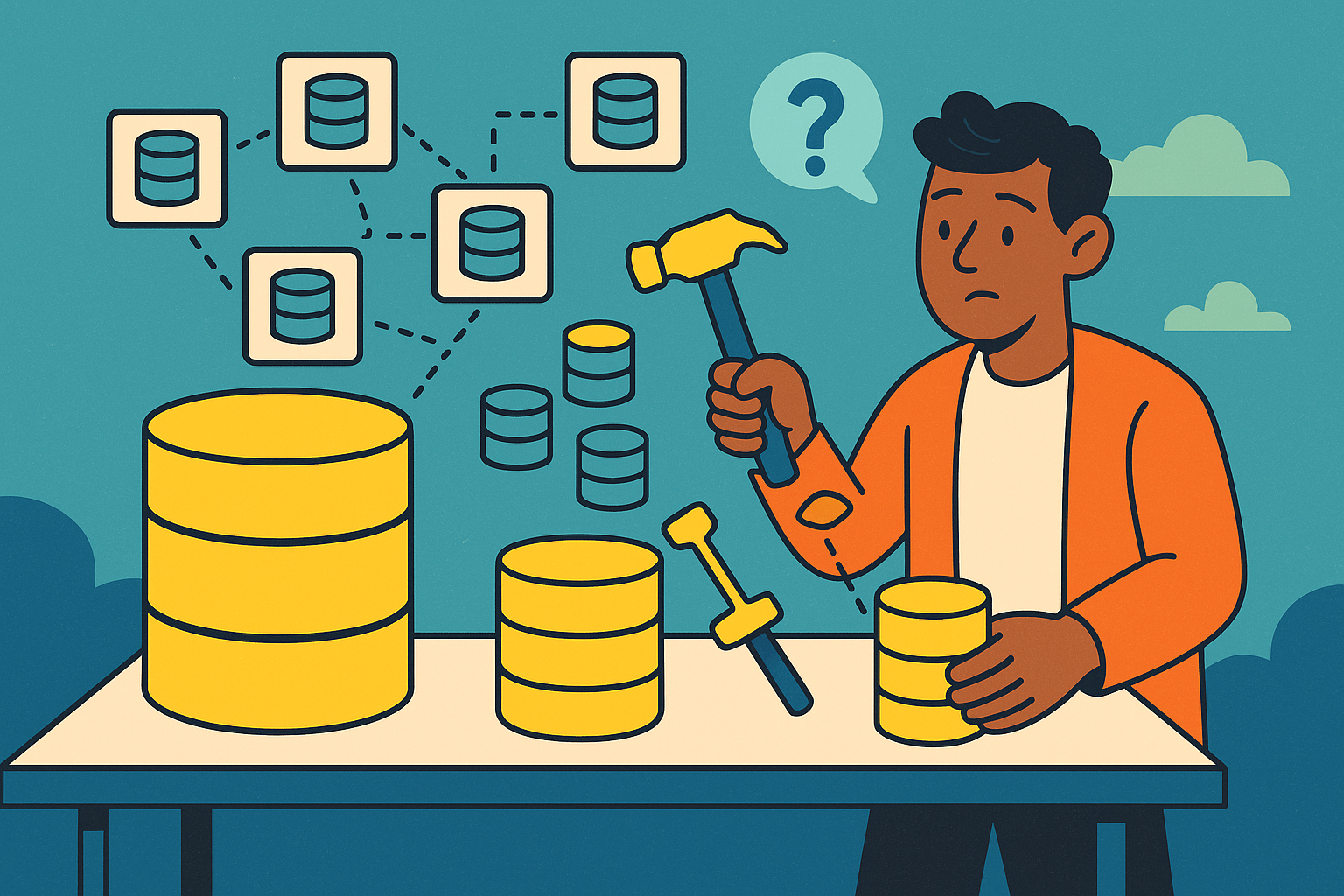Data modeling, the cornerstone of any digital enterprise operation, has long been the architect of how data is stored, retrieved, and managed. Traditionally confined to structured databases and conventional data warehouses, data models were often created with the tried-and-true methodologies of normalization and entity-relationship models. However, the emergence of big data, with its triad of complexity—volume, velocity, and variety—has posed unprecedented challenges, forcing a reevaluation of these methodologies. This discourse aims to delve into how big data is compelling a paradigm shift in data modeling approaches, both enriching and complicating the landscape.
Evolution of Data Modeling in the Pre-Big Data Era
In the years preceding the big data explosion, data modeling was a well-defined discipline rooted in solid theoretical foundations. The structure was king; relational databases, with their ACID (Atomicity, Consistency, Isolation, Durability) properties, ruled the roost. Architects and modelers designed databases to be highly structured, based on sound principles like normalization and entity-relationship models. These principles aimed to ensure data integrity and optimize for query efficiency.
Normalization, as a strategy, focused on organizing data to reduce redundancy and improve data integrity. It was akin to a set of rules or stages, where data modelers optimized tables based on relationships between different types of data. The essence was to store information such that any insertion, modification, or deletion of data would maintain the consistency of the database.
Entity-Relationship (ER) models, another mainstay of this era, provided a graphical representation of entities and the relationships between them. In essence, they served as the blueprint for database design. ER diagrams would be converted into schemas, which were then translated into tables in a relational database. They were particularly useful for defining the role and structure of data, allowing for better design and performance optimization.
SQL (Structured Query Language) was the query language of choice, catering to a plethora of database operations. The schema-on-write approach dictated that data conform to the schema before writing to the database. This approach, while effective for structured, small-to-medium datasets, was prescriptive in nature and lacked flexibility to handle more complex, variable forms of data.
Thus, traditional data modeling was primarily designed for structured data, which could be neatly categorized and tightly controlled. This methodological rigor made it effective for the databases and data warehouses of the time but also instilled a rigidity that would later prove limiting.
The Challenges Posed by Big Data
As organizations began to accumulate vast and varied datasets—often referred to as the "Three Vs" of big data: volume, velocity, and variety—the limitations of traditional data modeling became increasingly evident. Let's break down these challenges in more detail.
Volume signifies the immense scale at which data is generated. In the age of the Internet of Things (IoT), social media, and cloud computing, organizations are inundated with petabytes or even exabytes of data. Traditional databases, even if they are highly optimized, struggle to manage this magnitude effectively. The sheer volume not only affects storage but also impacts query performance, rendering conventional methods insufficient for swift data retrieval and manipulation.
Velocity refers to the speed at which new data is generated and moves into the system. With the rise of real-time analytics and monitoring, data is not just voluminous but fast-moving. Traditional databases, designed for batch processing and static schema, find it increasingly difficult to keep up with this constant influx of real-time data.
Variety encapsulates the heterogeneity of data types. In contrast to the structured data of the past, big data often comes in semi-structured or unstructured formats—be it JSON, XML, or even video and audio files. Traditional data modeling techniques, built around structured SQL queries and rigid schemas, are ill-equipped to handle this diversity without intensive preprocessing or transformation, making them less efficient and more cumbersome to use.
Doug Cutting, co-creator of Hadoop, once stated, "The changes in the scale of data will affect every company, either directly or indirectly." This rings especially true for data modeling, where the traditional approaches are not just insufficient but sometimes counterproductive in a big data environment.
These challenges have necessitated a reimagining of data modeling practices and tools. Whether it's the schema flexibility offered by NoSQL databases or the on-the-fly schema changes in Schema-on-Read systems, new approaches are emerging to cope with the demands of big data. The aim is not just to adapt but to transform the way we think about, and work with, data models.
The Rise of Schema-on-Read vs Schema-on-Write
One of the most impactful shifts has been the move towards Schema-on-Read approaches, especially in systems that cater to big data storage and processing. In contrast to the traditional Schema-on-Write, where data must fit into a predefined schema before it is written into the database, Schema-on-Read offers far more flexibility. This approach allows data to be ingested in its raw form, deferring the imposition of structure until read time. What this essentially means is that the same data can be interpreted in multiple ways, lending agility to evolving business requirements.
Adaptations in Normalization Techniques
In the age of traditional databases, normalization was often the go-to strategy for efficient data storage and retrieval. The key driver was to eliminate data redundancy and ensure data integrity. Essentially, normalization involved breaking down a database into smaller tables and linking them using relationships. This technique made it easier to manage changes to the dataset, thus maintaining data consistency.
However, with big data platforms, the cost-benefit analysis for normalization has changed considerably. In a world of petabytes of data, the focus has shifted towards optimizing for read-heavy operations, analytics, and real-time processing. In this new setting, denormalization, or the practice of merging tables, is gaining traction. The philosophy behind denormalization in a big data context is to reduce the I/O operations for typical queries. By doing so, it speeds up query performance, even if it means accepting some level of data redundancy.
Denormalization essentially turns the core principle of traditional normalization on its head. Where normalization seeks to reduce data redundancy, denormalization sometimes embraces it for the sake of performance optimization. When you're working with massive data lakes or real-time data streams, the milliseconds saved by reducing join operations between tables can result in substantial performance gains.
Moreover, NoSQL databases, often used in big data scenarios, are inherently more amenable to denormalized data. In databases like MongoDB or Cassandra, data is often stored in a denormalized fashion, in documents or wide-column stores, thus making read queries more efficient.
However, it’s crucial to note that neither normalization nor denormalization is a one-size-fits-all solution in the big data era. Often, a hybrid approach is needed, one that carefully balances the pros and cons of both based on specific use-cases. The crucial takeaway is that the rigidity once associated with normalization has given way to a more nuanced and flexible approach, acknowledging the unique demands of big data environments.
Emergence of Data Lakes and Data Mesh
The rise of data lakes and, more recently, data mesh paradigms, is another pivotal development. Unlike traditional databases that demand a centralized schema, data lakes and data mesh architectures encourage decentralized data storage. Each domain within an enterprise can have its own tailored schema, making it easier to handle the complexities inherent in big data. “Data lakes allow organizations to break data silos and aggregate data in its native format," observes James Serra, a big data evangelist. This promotes domain-specific modeling and paves the way for more granular, yet cohesive, data governance.
Relevance of Real-Time and Streaming Data
The current business ecosystem is not just about batch processing; it's also about real-time analytics and stream processing. This trend has necessitated the development of data models that can cope with a continuous stream of data, in real-time. Event-based processing models, designed specifically to manage such data streams, are becoming increasingly prevalent. These models deal with the challenges posed by real-time data ingestion and processing, bringing a new set of best practices into the realm of data modeling.
Implications on Machine Learning and AI
The ascent of big data is not only restructuring traditional data management but is also leaving an indelible mark on fields like machine learning (ML) and artificial intelligence (AI). Machine learning models are data-hungry by nature—the more high-quality data they consume, the better they perform. While big data offers an unprecedented opportunity for training robust models, the implications on data modeling for machine learning are multifaceted and profound.
Firstly, data scientists and ML engineers are often confronted with highly varied datasets. This variance can come in the form of data types, data sources, and even data quality. While big data tools can store and process this diverse range of data, machine learning algorithms require more specialized forms of data. Therefore, data models specifically tailored for ML and AI are increasingly gaining attention.
These models are not just about storing data; they’re also about structuring the data in ways that are conducive for feature engineering, model training, and inference. For instance, time-series data from IoT devices or unstructured text from social media feeds require unique modeling strategies that enable easy and effective extraction of relevant features. This is where specialized databases and storage formats, like TensorFlow’s TFRecord or Apache Parquet, come into play. These are designed with the nuances of machine learning data in mind, offering both compression benefits and specialized querying capabilities.
Moreover, the concept of "feature stores" is rising to prominence. Feature stores serve as centralized repositories for features, the transformed variables used in machine learning models. By normalizing the feature data and making it readily available across an organization, feature stores aim to standardize the data modeling process specific to machine learning workflows.
Jeffrey Ullman, Stanford Professor and Turing Award winner, emphasized the interconnected growth of data and machine learning when he said, "Data mining and machine learning are symbiotic areas of research on how to build intelligent machines." Indeed, effective data modeling can significantly influence the performance and interpretability of machine learning models. It provides a structured framework that makes it easier to manage the complexities of big data, thereby accelerating the iterative process of machine learning model development.
The dialogue between big data and machine learning is a two-way street. Just as machine learning benefits from the abundance and diversity of big data, big data technologies are continuously evolving to cater to the specialized needs of machine learning and AI. It's a mutually reinforcing ecosystem, driving both fields towards more efficient, scalable, and powerful solutions.
The Future of Data Modeling in the Age of Big Data
As we stand on the cusp of this transformation, it's important to speculate on future methodologies. Automation and artificial intelligence are beginning to find their footing in data modeling. As DJ Patil, former U.S. Chief Data Scientist, aptly puts it, "The future of data modeling will not only be about managing big data but using automated systems that can model data on the fly.” Such automation promises to further revolutionize how we approach data modeling, adding another layer of complexity and potential.
Charting the Evolutionary Path
The advent of big data is undeniably shaking the foundations of traditional data modeling. From the Schema-on-Read revolution to the rise of data lakes and real-time processing models, the big data wave is forcing a significant shift in the way we think about data modeling. Far from making these traditional methods obsolete, big data is driving their evolution, necessitating more adaptive and scalable approaches. For data professionals, the changing landscape underscores the need to unlearn, relearn, and adapt to these burgeoning methodologies.
 is now
is now


